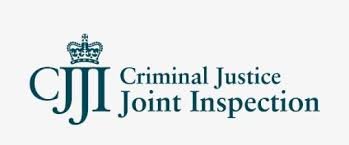By Sophie Ellis and Alex Hewson
Introduction It’s hard to find the right adjectives to describe the tumultuous year the prison and probation service has had. The chief inspector of prisons issued five urgent notifications (UN)—raising immediate concerns about conditions—the highest number in a single year. The prison service ran out of places, forcing the government to adopt emergency measures to hold people in police cells; release people from prison early; delay court hearings; and warn judges about the pressure on our already overcrowded prisons. Meanwhile, staff leave the service in droves, quickly burnt out by the conditions they face each day as they pick up their keys to start their shift. Prisons continue to be places of hopelessness and despair for too many people, with self-harm now higher than before the pandemic, and reaching the highest level on record for women. Whilst crisis and scandal can trigger defensiveness, they can also act as a launch pad for bold reform. The Government should seize this opportunity to show that the status quo is not working and present a positive alternative vision for our criminal justice system. One that is rooted in the things that matter to the communities that they serve—safety, fairness, effectiveness and decency—and which relies on evidence rather than rhetoric. Alex Chalk, our current Secretary of State for Justice, has to his credit begun this journey. A swift reconsideration of his predecessor’s intransigence to ending the injustice of the Imprisonment for Public Protection (IPP) sentence; reversing measures which prevented people progressing in their sentences; and introducing legislation currently before Parliament for a presumption that prison sentences of a year or less should be replaced with a suspended prison sentence. All of these are causes for celebration in a sector where the wins are few and hard fought for. As the former Governor of HMP Liverpool, I know first-hand the powerful impact that reducing prisoner numbers had on my ability to bring about much needed reform measures. Overcrowding is the single biggest barrier in providing a safe, decent and rehabilitative prison. Prisons will always be messy, complex places to live and work in, but by hitting the reset button it reduced the relentless day-to-day crisis we faced when the next full escort van turned up. Having fewer people in the prison not only reduced the flow in and out of the gates each day, but it also gave me and my team some breathing space to work through the plethora of problems we needed to fix. It unlocked the much-needed funding and focus for refurbishment to take place. It allowed us to develop a vision; to articulate our values and to see the wood for the trees. But most importantly, it allowed us—the operational experts—to shape our prison in a way that worked best for those who lived and worked there. But what happens when you have a prison system with so little slack that you can’t simply transfer 500 people to another prison down the road? We’ve witnessed the very real consequences on prisons when politicians talk about the need to “toughen up” sentences with little thought given to the implications—or to the long line of similar measures that preceded them. Governors up and down the country—good, hard working and well-intentioned leaders—must despair at how straightjacketed they are. They are expected to be omnipotent leaders—ultimately responsible when it hits the fan—but are often left feeling that they have little autonomy. They fulfil the insatiable requests for information from higher management; they react with knee jerk responses in anticipation of events that could cause their ministers political embarrassment; and they live with the constant threat of doing something which turns out to be career limiting. In the new world, the decision-making structure has well and truly moved from the governor’s office to outside the prison......
London: Prison Reform Trust, 2024. 86p.





















